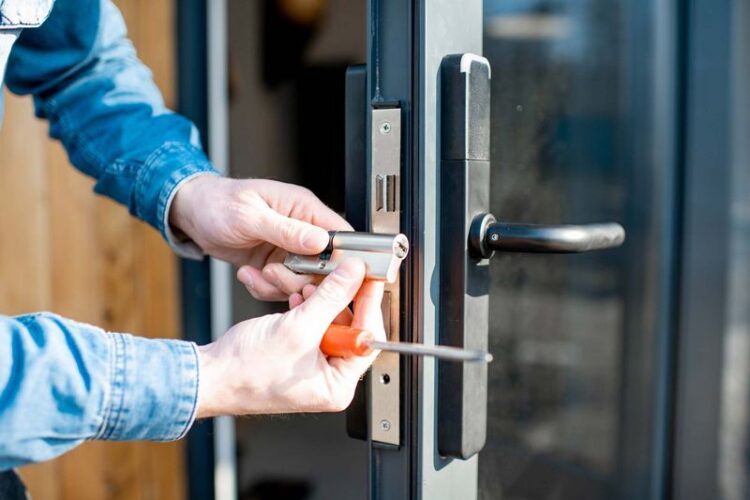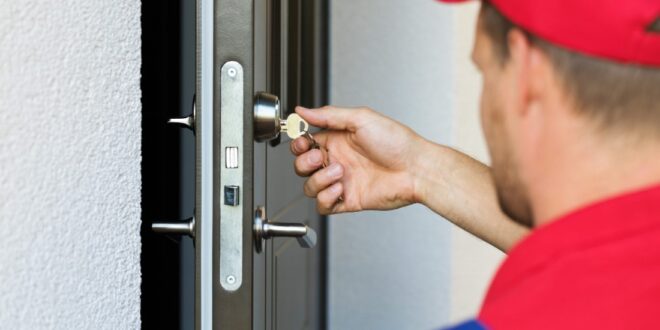There are several common opening methods used by experts and emergency workers. The type of method depends on the situation, the lock mechanism, its burglary resistance class, the type of door, and so on.
- Lock picking ─ Skilled locksmiths use lock picking tools to manipulate the internal components of the lock, aligning the pins to unlock it. This method requires precision and practice.
- Bumping ─ Bump keys are specially designed to fit into the lock and, with a slight tap, align the pins momentarily, allowing the lock to open. While effective, this method is generally used on older locks.
- Drilling ─ When non-destructive methods fail, locksmiths may drill the lock. This destroys the internal mechanism, allowing the locksmith to manually open the door. This method is a last resort and necessitates replacing the lock afterward.
- Impressioning ─ This technique involves creating a new key by inserting a blank key into the lock and manipulating it to make an impression of the lock’s mechanism. It requires a high level of skill and patience.
- Bypassing ─ Some locks can be bypassed without manipulating the locking mechanism. This might involve accessing the latch directly or using specialized tools to trigger the lock’s release.
- Electronic methods ─ For digital or smart locks, locksmiths might use electronic tools or hacking techniques to bypass the lock’s security system, though this is generally more complex and time-consuming.
Please note that professional and legal opening of doors to apartments, houses, offices, and even cars is carried out by licensed services such as https://spb.lock-russia.ru/. It is not recommended to try to pick locks yourself, so it can be both dangerous and ineffective.
Legal Scenarios for Opening Door Locks

When the owner of a property loses their keys, locksmiths are often called to open the lock legally. Proof of ownership or residence, such as an ID and a matching address, is typically required.
If a lock is damaged and the key cannot turn or be inserted, a locksmith will legally open the lock to allow access. Again, proof of ownership is necessary.
In cases where keys are stolen, it is legal to have a locksmith open the lock and, if necessary, change it to prevent unauthorized access by the thief.
Landlords might request locksmith services to open locks when tenants are locked out, provided there is proper documentation and adherence to local laws.
In the case of legal evictions, locksmiths may be employed to change locks to prevent the evicted party from re-entering the property.
Law enforcement or emergency services might require locksmiths to open doors during emergencies, such as welfare checks, fire, or other urgent situations.
When It’s Better to Change Your Lock

- After a break-in ─ If your property has been burgled, change your locks immediately to ensure the intruder cannot return.
- Lost or stolen keys ─ If your keys are lost or stolen, changing the locks is a precautionary measure to prevent unauthorized entry.
- Worn or damaged locks ─ Over time, locks can wear out or become damaged. If your lock shows signs of wear or damage, replace it to maintain security.
- After moving ─ When moving into a new home or office, change the locks to ensure that previous occupants cannot gain access.
- Upgrade security ─ Periodically upgrade to more secure locks to stay ahead of potential security threats, especially if your current locks are outdated or of low quality.
- Key duplication concerns ─ If you suspect that someone unauthorized has duplicated your keys, changing the locks will ensure they no longer have access.
 Hi Boox Popular Magazine 2024
Hi Boox Popular Magazine 2024



